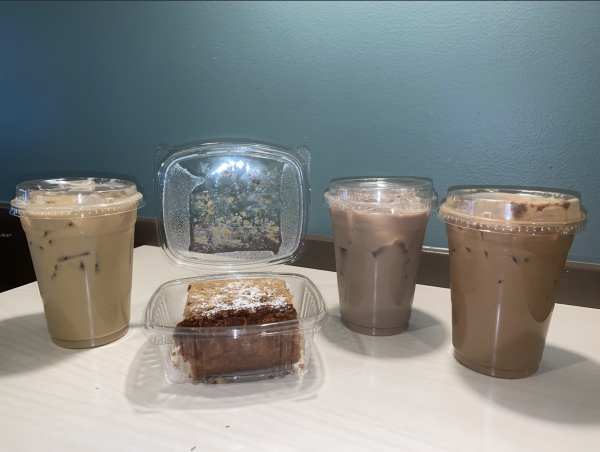History of Halloween
Carved Halloween Pumpkins
November 1, 2022
As the spooky season creeps around the corner, carving pumpkins, trick-or-treating, and wearing scary costumes are some of the beloved traditions of Halloween. But where do these traditions start? Travel back in time with us to learn what some of the very first ghostly celebrations of Halloween looked like.
Are you superstitious? Well so were the Celts. Traveling back to the ancient Celtic festival of Samhain it was believed that the world of the Gods became visible to humans, resulting in supernatural mischief. Some people offered treats and food to the gods, while others wore disguises so that lurking spirits might mistake them for one of their own.
When asked about favorite Halloween traditions, Addie Moller ‘26 said, “My favorite Halloween tradition is getting to dress up in fun and scary costumes. But I don’t know about the history of where it came from.”
It is believed that hiding behind their costumes, villagers often played pranks on one another, but blamed the spirits. Masks and costumes came to be seen as ways to get away with things. Which has continued throughout Halloween’s evolution.
Though the Celts originally wore these costumes to fend off the evil spirits, it sooner turned into a mischievous and playful act of pranks and what is now known as Trick-or-Treating, in which people would dress up in outfits symbolizing the souls of the dead, going from house to house to gather treats or spice-filled soul cakes.
But this wasn’t the only theory of where Trick-or-Treating came from. During Samhain, it is believed that Celtic people would leave out food to make peace with the spirits traveling the Earth at night.
Another theory argues that modern American trick-or-treating stems from “belsnickeling”: a German-American Christmas tradition where children would dress in costume and then call on their neighbors to see if the adults could guess the identities of the disguised. If their identity was unable to be revealed they were rewarded with treats.
When asked about her favorite Halloween tradition, Lilian Hirschfeld ‘26 answered, “My favorite tradition is carving pumpkins and creating scary faces on them.”
Other than the beloved traditions of trick-or-treating and dressing up in the hottest new Halloween costumes, carving pumpkins is a widely known and loved tradition. But where did it originate?
The tradition of carving Jack-o’-Lanterns first originated in Ireland with the use of turnips instead of pumpkins. It is allegedly based on the legend about a man called Stingy Jack who continually trapped the Devil and only let him go on the condition, Jack would never go to Hell. But when Jack died, he learned that Heaven did not want his soul either, so he was forced to wander the Earth as a ghost for eternity.
It is said that the Devil gave Jack a burning lump of coal in a carved-out turnip to light his way. And with superstitions still surging through society, locals eventually began carving scary faces into their turnips to frighten away evil spirits.
If you’re not superstitious about ghosts, spirits, or getting stuck between worlds, but do worry about the black cats that wander our world, you are similar to those in the Middle Ages. During the Middle Ages, these dark felines were considered a symbol of the Devil. Suspected witches were also often found to have cats, specifically black ones. So, people began to believe that the cats were a witch’s supernatural entity that would assist in their practice of dark magic. Ever since black cats have been linked to the lore surrounding witches and the Devil.
As Halloween creeps up behind you, so does its past. So which tradition will keep you on your toes this Halloween, will it be carving pumpkins, trick-or-treating, or wearing scary costumes, or will it be all of them?





